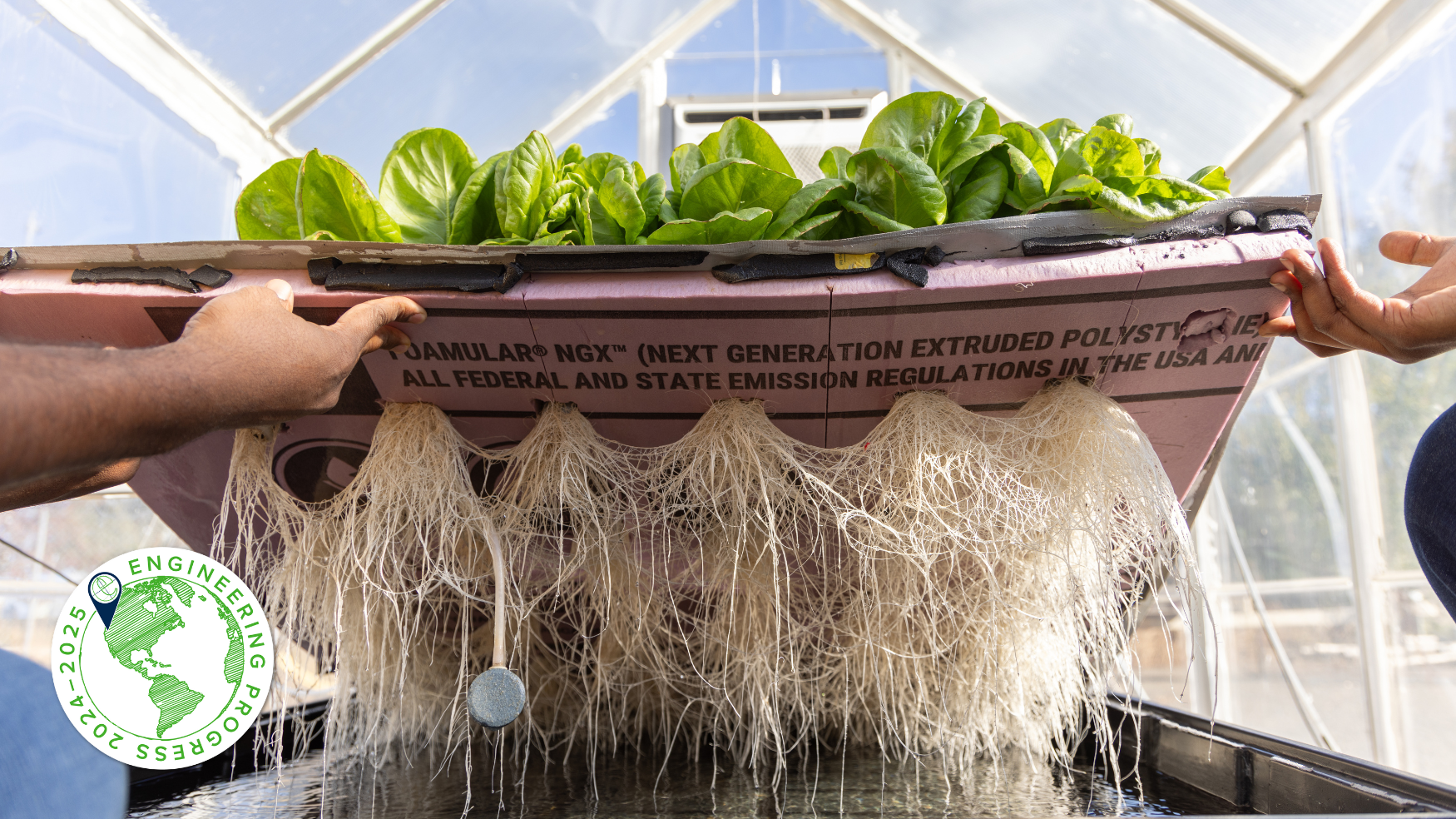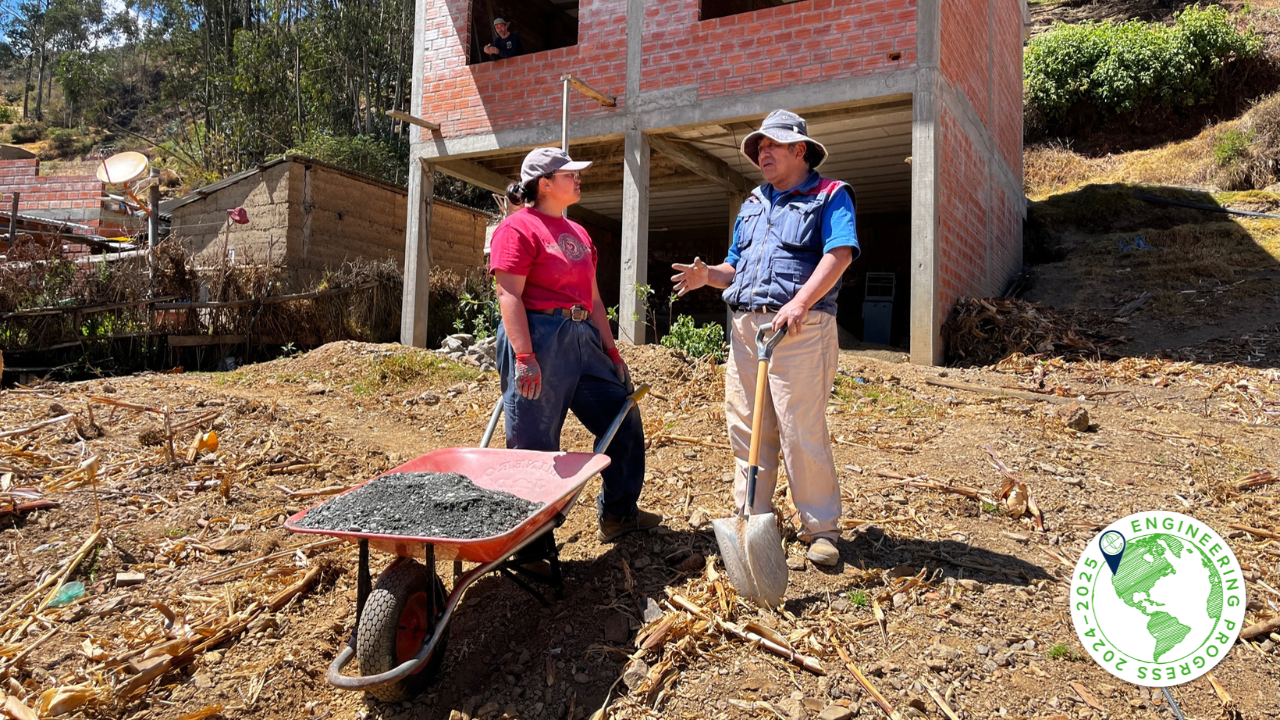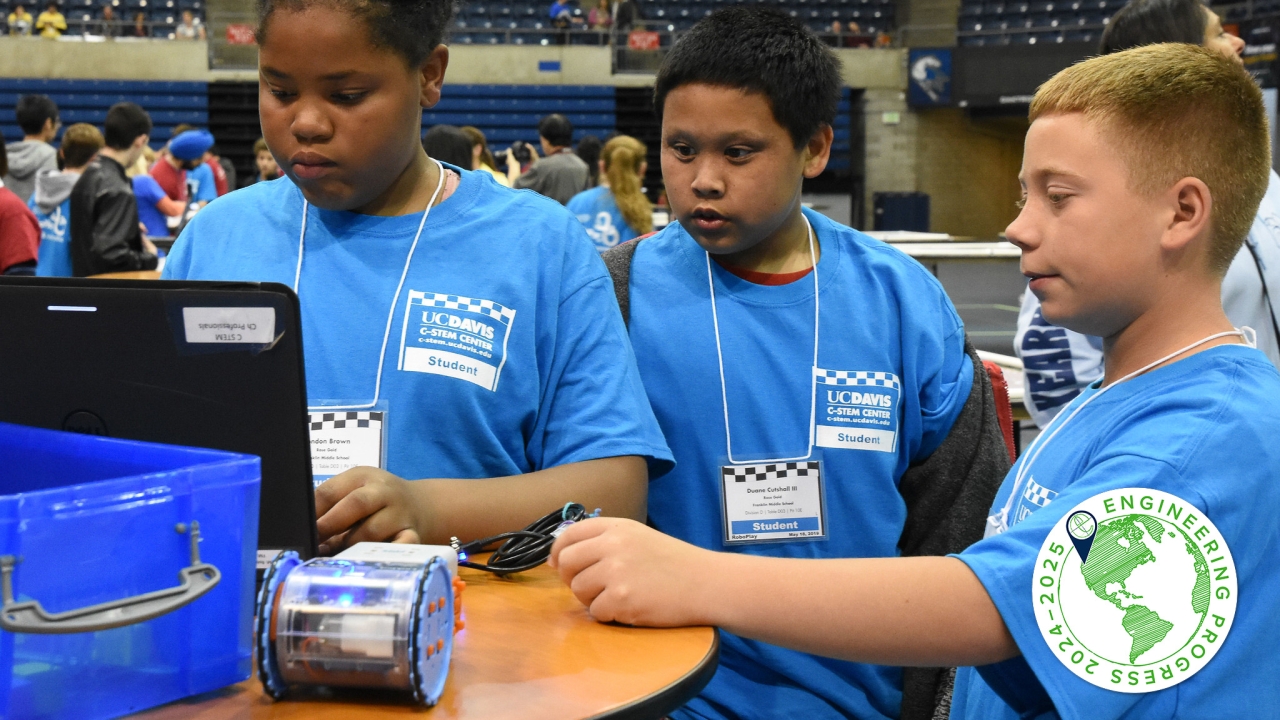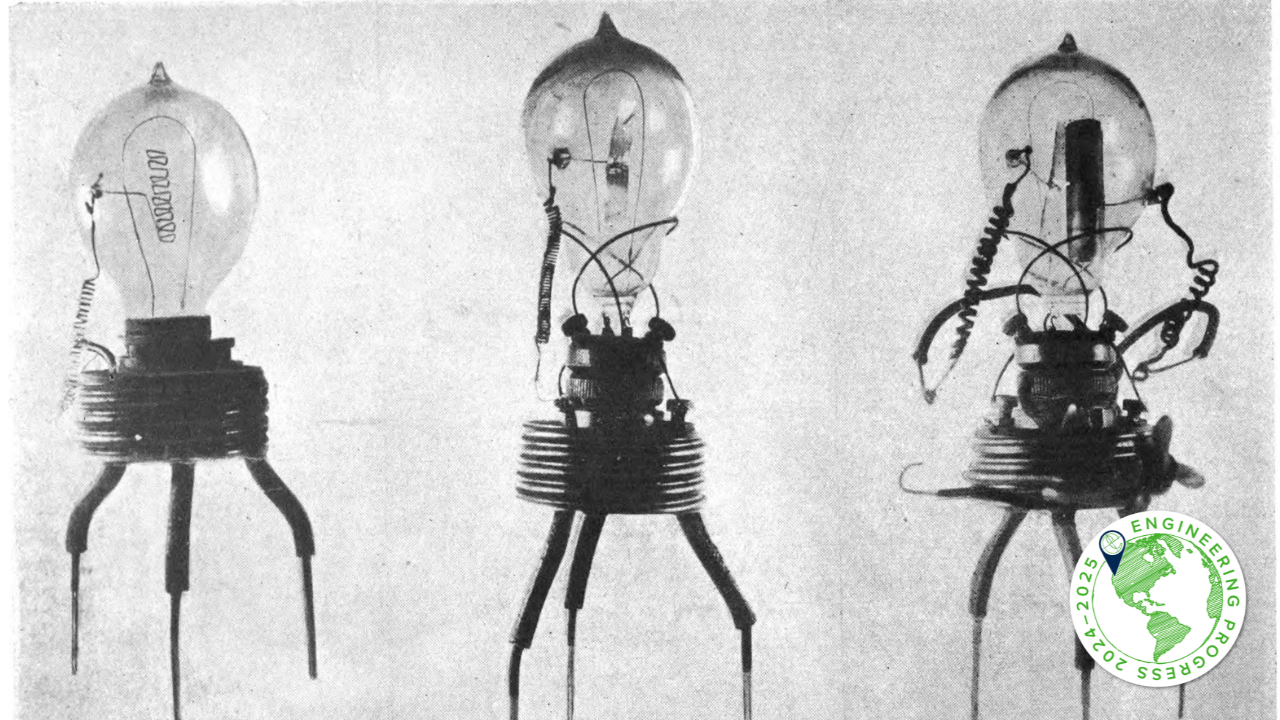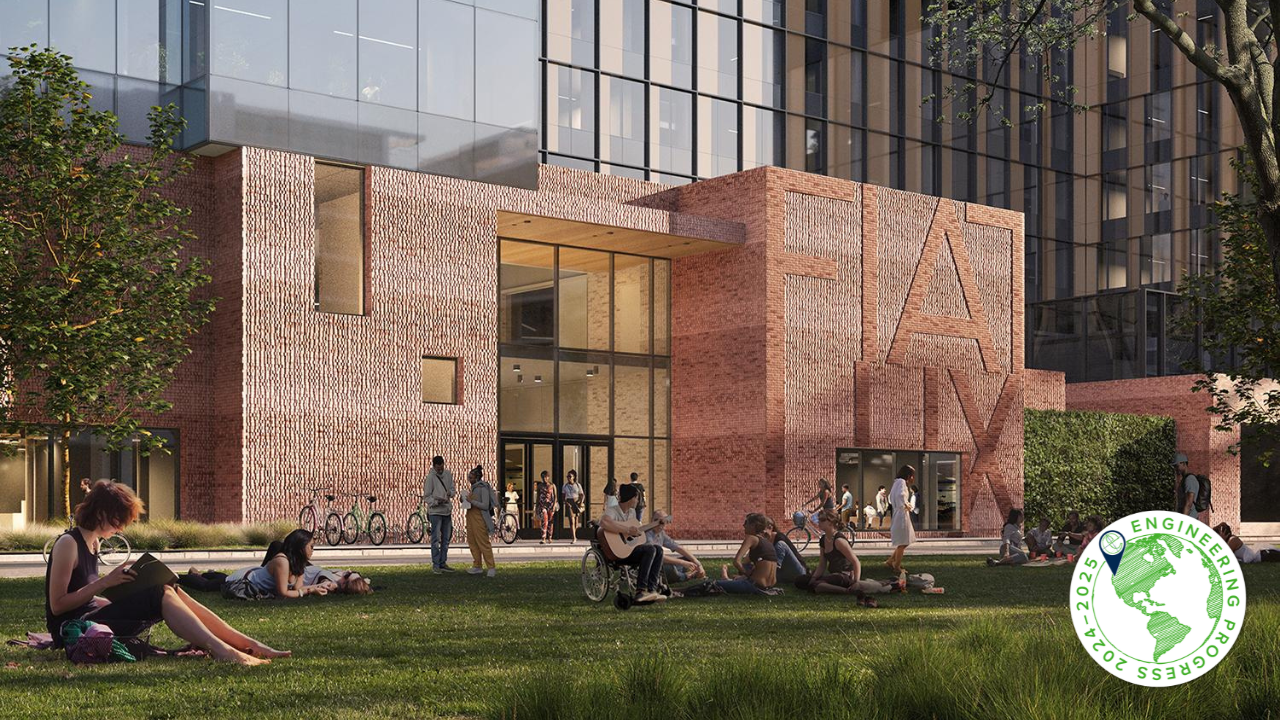Rooted in Water, Rooted in Change
Researchers lift up a bed of lettuce suspended over water to showcase the plants' root structures. This growing method, known as hydroponics, is gaining ground in California. (Mario Rodriquez/UC Davis)
Hydroponics Presents Hope for California's Water-Wise Future

by Matt Marcure | Engineering Progress Magazine 2024-25
Hydroponics is a soilless approach to agriculture that has never quite taken root with farmers in California, where the world's largest swath of premium earth for growing crops reaches between the Sacramento and San Joaquin Valleys. Bet the farm on this changing over the next few decades, as water use efficiency increasingly becomes a major topic in the Golden State.
For example, in 2023, the California Department of Agriculture released a report that anticipates as much as a 23% decrease in the State Water Project's capability and reliability in water distribution by 2043. This is due to extreme weather events, such as severe droughts, caused by the climate crisis.
Here is where hydroponics stands to benefit: it could achieve a 90-95% increased water use efficiency compared to open field (i.e., traditional) farming methods, letting farmers get more out of their water and putting less pressure on the state's water budget. It would also allow crops to be grown year-round. For these reasons, the hydroponics industry is starting to break through in California.
But, due to the technique's budding popularity, the infrastructure and knowledge base aren't quite there to take off in the state, particularly for new farmers. Advancements in the method itself, from precision control and monitoring to novel water harvesting techniques, could also enhance hydroponics' water and nutrient-saving potential.
To address this, Assistant Professor of Biological and Agricultural Engineering Shamim Ahamed leads a technical assistance and educational effort for small to medium-scale producers in the process of launching new hydroponic facilities and improving the efficiency of existing farms across the Golden State. Small Farms Advisor Amrita Mukherjee and Urban Agriculture Technology Advisor Grant Johnson from the University of California Agriculture and Natural Resources assist on the project, helping Ahamed connect with farmers directly.
The California Department of Food and Agriculture has awarded the project a nearly $400,000 Water Efficiency Technical Assistance Grant, which is supported by the state's emergency relief fund, underscoring the urgency of this work.


Testing the Waters
The first step of this project is assessing the infrastructure and designs of farmers' current hydroponic systems, which fits into one of Ahamed's principal research areas: creating energy- and water-efficient systems for controlled environment agriculture, or CEA. The classic example of CEA is a greenhouse that enables ideal plant growth through artificially set temperatures and humidity.
Outside of California, hydroponics is a commonly used growing method in CEA. Plants are either suspended over water or drip-fed water and nutrients on a set schedule, allowing growers to use the exact amount of irrigation and nutrients required for a plant to grow and no more.
In theory, a hydroponic system can be designed to recycle water and nutrients to reduce nutrient-rich wastewater production and environmental runoff. However, this isn't always the case in practice.

"In general terms, hydroponic production is a closed loop," Ahamed said. "But it's often not this way, meaning the hydroponic farmer is losing water and nutrients. These lost resources are discharging things to the environment that have a huge impact in terms of pollution and also to the production cost for the farmer for treatments of nutrient solutions."
To ensure that the hydroponic systems are increasing the farmers' water and nutrient use efficiency and meeting environmental standards, Ahamed and his team will collect water and nutrient samples to assess potential issues and propose fixes specific to crop needs. An important part of this process is speaking with each individual farmer.
"We'll get their perspective, we'll hear what existing issues they are facing," he said. "Then, from an engineering perspective, we'll provide solutions for them to consider. It's important to directly work with the farmer, to identify their problem and consult with them to implement solutions."
These solutions will range from the integration of new technology to retrofitting existing facilities to make them appropriate for hydroponic production, Ahamed said. The goal is to give the right tools to the farmers to significantly improve their water and nutrient use efficiency and to ensure their systems are as much of a closed loop as possible.
Currently, the team is conducting outreach to 30 California farmers they believe will benefit from this program. At least 25% of all farmers the team works with will be from historically underserved groups and people of color.
"It's critical to support the growers, especially underserved growers, in California's new dimension of climate-resilient agriculture," he said. "Technical assistance programs will help them resolve the existing challenges of precision water and nutrient management for hydroponic production."


Seeding Long-Term Success with Education
Ahamed's project will also develop an educational series that introduces farmers to the basics of hydroponic systems.
This will take the form of a five-part webinar that will be accessible to anyone interested in the topic, from students to hobby farmers and large-scale agricultural producers. The videos will serve as a primer on hydroponics, from how it works and what technology is needed to how can be used to improve water and nutrient use efficiency.
His team will also provide a micro-credential program to those passionate about hydroponics to kickstart their careers of helping others launch their own water-wise agricultural systems.
"One part is to directly serve the community," Ahamed said, "and the other part is to educate the community about the precision nutrient and water management for hydroponic production."
From direct outreach to farmers to community service through education, Ahamed is working the soil of California's future. Why? To sow the seeds of endurance and adaptability in the Golden State's farming community.

This article was featured in our 2024-2025 digital edition of Engineering Progress Magazine. Read more stories.

